Quick Reference
c. 1930
Purinton's Hill
Buckland, MA
Oil on Canvas
Landscape
Mountains
30" x 36"
Myles Standish Gallery, 1931
Smith Coll. Tryon Gallery, 1931
Mt. Holyoke Coll. Dwight Hall, 1931
Amherst Coll. Jones Library, 1932
Amherst Coll. Jones Library, 1934
Myles Standish Gallery, 1944
Robert Frost
N/A
Related Links
- See also the...
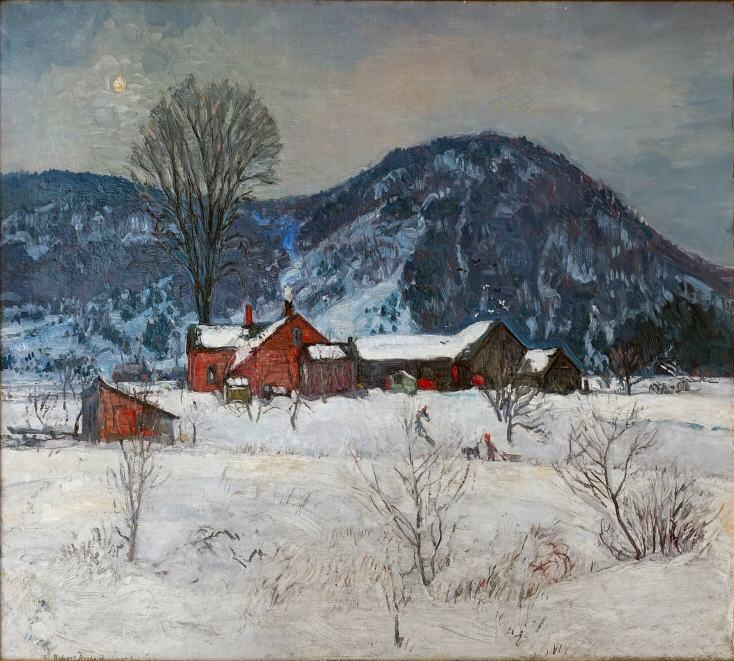 Purinton Hill for related pieces.
Purinton Hill for related pieces.
- See also the...
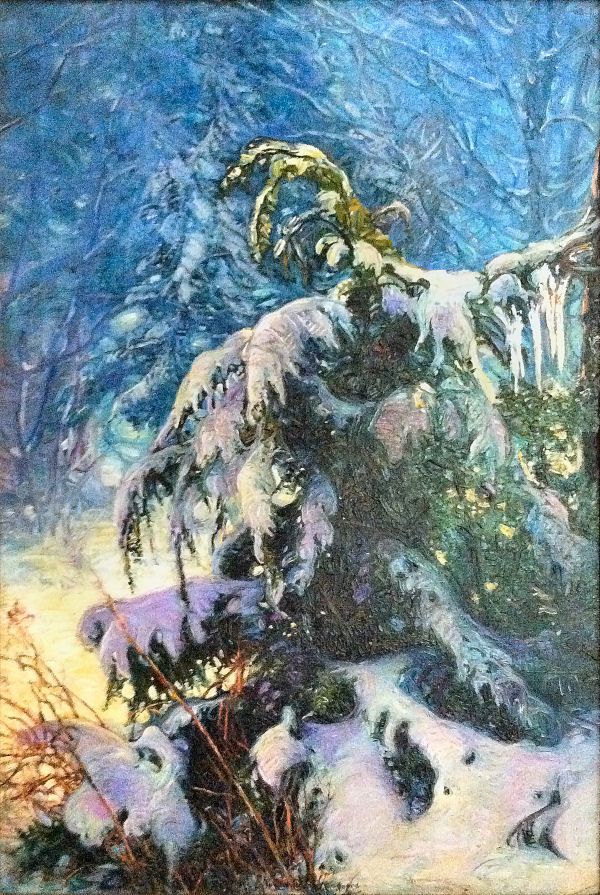 Snow on the Ground Gallery to view related pieces.
Snow on the Ground Gallery to view related pieces.
- See also our ...
 Scrapbook page devoted to RSW's friend and famous poet Robert Frost
Scrapbook page devoted to RSW's friend and famous poet Robert Frost
- See also the...
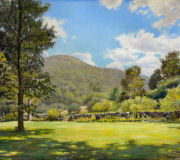 Landscapes & Views Gallery to view related pieces.
Landscapes & Views Gallery to view related pieces.
- See also the...
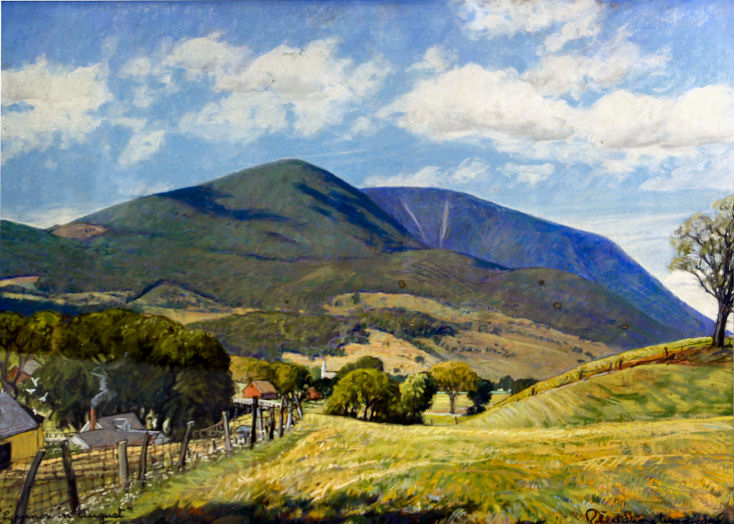 Mountains Gallery to view related pieces.
Mountains Gallery to view related pieces.
- See also the...
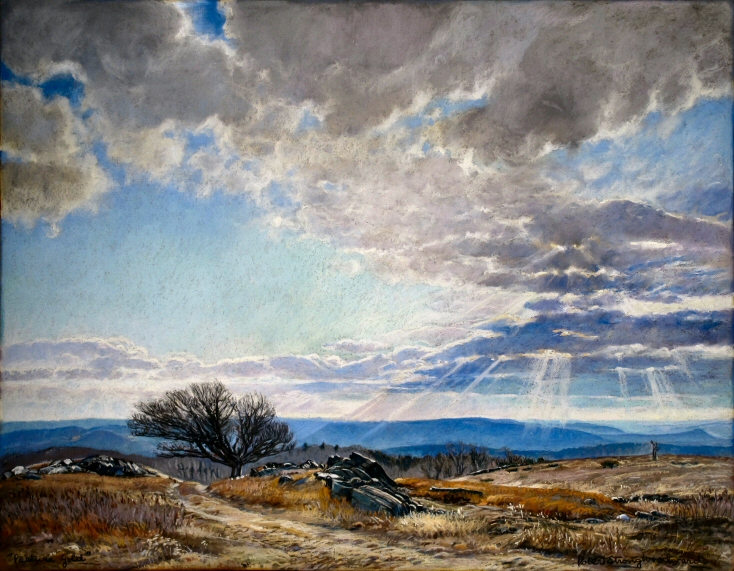 Stunning Skies Gallery to view related pieces.
Stunning Skies Gallery to view related pieces.
- See also RSW's ...
 Famous Owners Gallery
Famous Owners Gallery
- See also the...
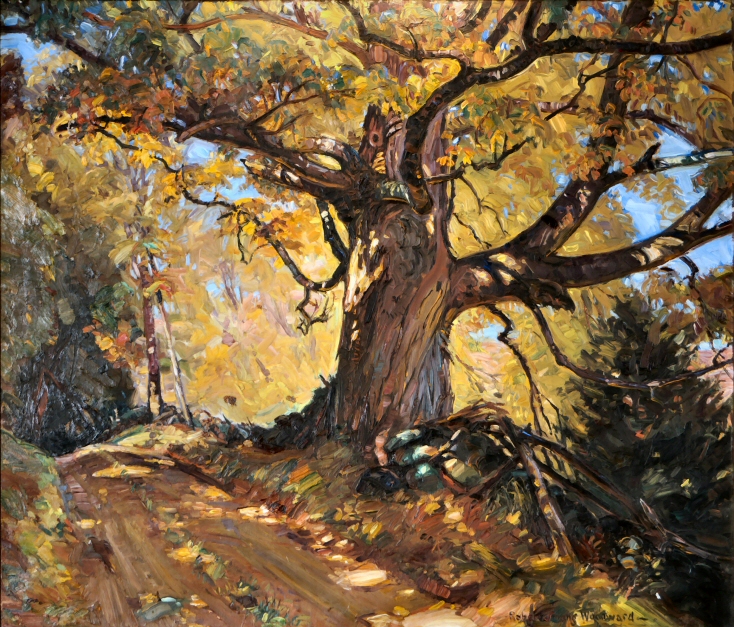 Trees Gallery to view related pieces.
Trees Gallery to view related pieces.
- For more about the...
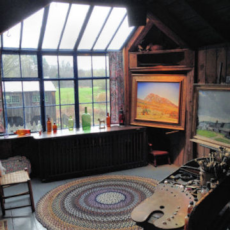 Southwick Studio Then and Now...
Southwick Studio Then and Now...
Featured Artwork: Winter Dignity also known as Dignity of Winter and Snow Symphony
RSW's Diary Comments

 Frost and his wife Elinor with their children
Frost and his wife Elinor with their children
From RSW's personal diary: Wednesday, April 6, 1932
"Warm and sunny bit windy. Could not go
painting for I was ill and could not get out
of bed until noon. Went to Amherst to have
a visit and tea with Robert Frost, bringing
home two of the four paintings he had."
"Painted prior to 1930. A winter canvas with quite a history! The blue dome of Purinton's Hill against a
winter sky of light clouds, a band of dark pines and hemlocks slanting down in the middle ground before it, over
a snow laden winter foreground of slight knolls with winter weeds breaking here and there through the snow. Largely
exhibited and praised and bought by Robert Frost from my exhibition at Amherst
College in... [Feb. / March 1932] Much loved by him and his wife and the center of his famous living room in Amherst
for a number of years.
After his wife died, and he had moved to Cambridge, Robert Frost, to my amazement, wrote me that since his wife had
been so fond of this painting, for sentimental reasons he felt I would understand (though I somewhat failed to do so)
he would like to know if he could exchange Winter Dignity for another canvas of mine. He being
Robert Frost I couldn't possibly say no, though I didn't approve of the transaction wholeheartedly. I sent a
number of canvases to the Vose Galleries for his selection and from them he chose the 30" x 36"
Passing New England which he now owns and I took back Winter Dignity to the studio where it still is, in
1947. White and Wychoff Mfg. Co. made a colored Christmas card of this for their 1948 series."
Editor's Note:
We do not normally edit Woodward's diary comments on a painting but in this case we felt the entry was too long and created another paragraph at what we believe is the appropriate spot. Moreover, he left blank when Frost bought the painting and so we added the month and year of the exhibit. There is more to the story which we will continue below...
Additional Notes

 From Woodward's personal diary...
From Woodward's personal diary...
Sunday, May 8, 1949
"An ideal sunny May day. A prisoner at home. In
afternoon got out the old Frost canvas, 'Winter
Dignity' and at n. window worked on it all day,
cleaning, oiling, sand papering some cracks and
touching up with paint, part of the sky."
⮝ Let us start with the diary entry itself... We have not one lick of evidence this painting was
painted prior to 1930 other than maybe that it needed some maintenance in 1949. The most common mistake that we find
in the painting diary is the year and thus our use of circa (c.) meaning about. It is a way of giving him some latitude.
It is clear Woodward did not approve of the exchange with Frost, we wrote an entire essay about it, but in short, we
do not think it made sense to the artist. We feel like Woodward's perspective was 'the reason Frost gave to return the
painting would be the exact reason, to Woodward, for keeping the canvas- it was your wife's favorite. It is your
connection to her why part with it?'
Two years after writing the lengthy diary entry ⮞ above, Woodward spent a day in the studio fixing Winter Dignity. He does not give a reason but it seems obvious it was needed. This could indicate its age is older than 1930 but it is not conclusive.

 The showroom of the Myles Standish Gallery for
The showroom of the Myles Standish Gallery for
the 1929 inaugural exhibition for Woodward. We beli-
eve the gallery acted as Woodward's Boston agent
from 1929 to 1936 when he was then represented by
the Vose Gallery on Boyleston Street. Still, the artist
remained faithful to the hotel's end in 1944.
⮜ ⮟ One of the more perplexing issues surrounding this painting is that there are three names
linked to it. Two are easily explained, however, why all of the newspaper reviews below refer to the painting as
Dignity of Winter is unknown. We can only speculate, but all three reviews below are from the same show at the
Myles Standish Gallery in Boston which ran for nearly four months with slightly various alterations to the line up.
We tried searching for the name Dignity of Winter prior to 1930 because Woodward began exhibiting at Myles in
1929, shortly after it opened. We also have a history of the hotel hanging the artist's work in its restaurant and
lobby, sometimes for years at a time. This could be the case for this painting and at the time, its name was
Dignity of Winter. That explains both its age and the name, yet neither are conclusive without proof. After
1931, perhaps at the suggestion of a friend, Woodward changed its name to Winter Dignity. There are a few
examples, such as Portrait of a Shadow (c. 1931) that was previously named
The Little Farmhouse. Maybe you are asking yourself how we know "Dignity of Winter and Winter
Dignity are the same painting? In all of the exhibition records compiled by
Dr. Mark and the 1969-70 Deerfield Academy's American Studies Group list only the name, Winter Dignity.
---------------------------------------------------------------------------------------------------------------------------------
REVIEWS FOR WINTER DIGNITY / DIGNITY OF WINTER
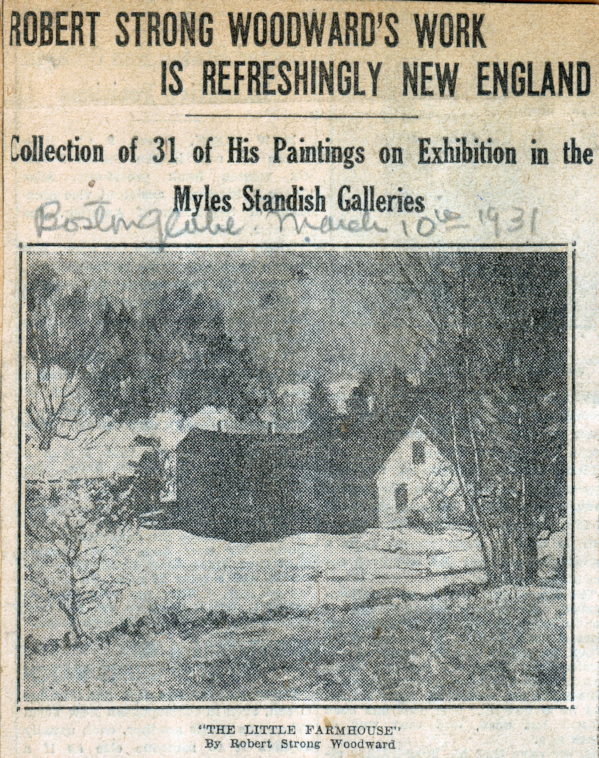
 Boston Globe, March 10, 1931,
Boston Globe, March 10, 1931,
by A.J. Philpott
North Adams Transcript, March 1, 1931
"Dignity of Winter, a picture of luminous color quality which shows austere pines and cedar set against a snowy hillside."
⮜ Boston Globe, March 10, 1931, by A.J. Philpott:
Another remarkable Winter picture is entitled, 'Dignity of Winter.' It is of the hill country with a sketch of pines and cedars in the centre- beautiful in character- and a luminous, color quality in the distance and sky which gives the picture unusual distinction.
The Breeze, June 5, 1931
Dignity of Winter is full of power and silence. Standing in the deep snow of the foreground, we look across a tree-shadowed valley to a snow-patched mountain in the middle distance.
---------------------------------------------------------------------------------------------------------------------------------
WINTER DIGNITY USED AS THE IMAGE OF A GREETING CARD

 The agreement with White & Wyckoff Co. for
The agreement with White & Wyckoff Co. for
rights to the image of Winter Dignity, to be used in
their under the name Snow Symphony
The agreement seen to the right is pretty basic ⮞ and self explanatory. Woodward was paid $125.00 for the exclusive rights to the image of Winter Dignity for use in its 1948 Greeting card assortment.
What is not really very clear is the name that Woodward crossed out to write Snow Symphony -- "Firs and Brmine." Firs, makes sense because those are the trees in the foreground, but what was intended for "Brmine," which is not a word (we checked). Also, was this a name suggested by White & Wyckoff without Woodward's input? Was Brmine suppose to be "Brim?" That would make the suggested name "Firs and Brim."
Calling the painting Snow Symphony, sounds much more like Woodward who was perhaps influenced by artist
James NcNeill Whistler, and liked the idea of art as musical, used "symphony" or "song" is several painting names.
For more on the card, visit the artwork page Snow Symphony, which we kept solely for
this purpose.
---------------------------------------------------------------------------------------------------------------------------------
THE MEANING OF FROST OWNING A WOODWARD: ARTICLE

 Holyoke Transcript - June 10, 1932
Holyoke Transcript - June 10, 1932
by "The Oracle"
Holyoke Transcript - June 10, 1932
"...Out of this happy kinship there certainly emerges a reason for great thankfulness and rejoicing among all lovers of New England. We have loved it so long unexpressed. We have longed so to have its loveliness, its poignant atmosphere, its poetic appeal caught and made in some way permanent. We have listened again and again in vain among the poets of an older day for the note that to us was so plainly audible in the region, and have looked again and again among the artists for just the color, the line, the shadow, the inexpressible something that our eyes behold---our inward eye as well as the outward! Nowhere until now have we found just New England between the covers of a book, or on canvas there upon the wall, like a window opening out upon a well-loved landscape..."

.png)
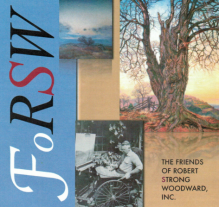
734.png)